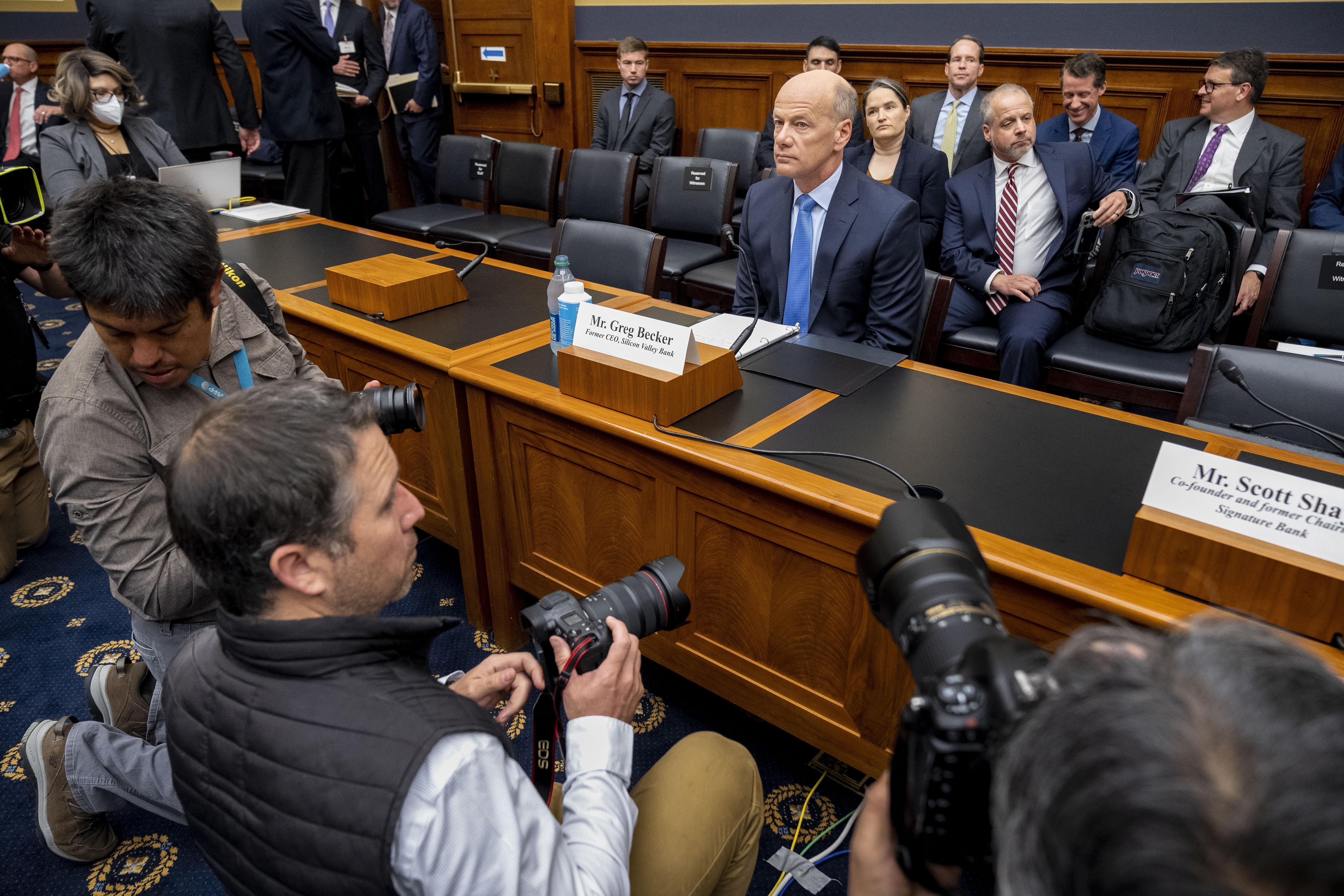 Former Silicon Valley Bank CEO Greg Becker arrives before a House Committee on Financial Services hearing on oversight over regional bank failures on Capitol Hill in Washington, May 17, 2023. (PHOTO / AP)
Former Silicon Valley Bank CEO Greg Becker arrives before a House Committee on Financial Services hearing on oversight over regional bank failures on Capitol Hill in Washington, May 17, 2023. (PHOTO / AP)
NEW YORK - Bankers are beefing up risk management, monitoring and emergency procedures around the use of social media after an internet-fueled run toppled Silicon Valley Bank two months ago and sparked turmoil in the industry.
Greg Becker, the former CEO of Silicon Valley Bank, blamed social media as an "unprecedented" factor in the lender's demise. Depositors withdrew $42 billion from SVB in 10 hours, he wrote in testimony to the Senate Banking Committee
In board rooms across the United States, executives are devising programs and plans to counteract online threats including rumors around the health of the banks that could lead to deposit outflows or weigh on the stock, according to seven banking industry executives and analysts.
ALSO READ: As US debt crisis looms, G7 finance chiefs warn of uncertainty
The efforts, which have not been previously reported, underscore banks' urgent efforts to adapt to changing times, prevent depositors from sparking a bank run or stop online attacks on their shares by short sellers.
Lenders are taking action, rethinking social media's role as a potential risk rather than marketing tool, after tweets questioning SVB's financial health prompted nervous customers to pull $1 million per second from their accounts before the bank failed on March 10.
"Social media risk was primarily reputational, but now it has led to deposit flight risks, which are existential," said Sumeet Chabria, founder of ThoughtLinks, a consulting and advisory firm that works with banks.
Greg Becker, the former CEO of Silicon Valley Bank, blamed social media as an "unprecedented" factor in the lender's demise. Depositors withdrew $42 billion from SVB in 10 hours, he wrote in testimony to the Senate Banking Committee on Monday.
SVB's swift downfall stunned markets. On March 8, the lender announced it was selling securities and raising capital. As concerns about its financial health escalated, clients in the Bay Area tech industry tweeted about their worries and pulled out funds via mobile apps or online banking.
The former CEO of First Republic Bank, Michael Roffler, also blamed social media for its collapse two months later.
ALSO READ: Vietnam to require social media users to verify identity
"It has been a wake-up call for some smaller lenders who are now working on updating their emergency response and risk capabilities, along with business continuity plans to tackle this threat," Chabria said.
Bank executives and directors have ordered their companies to add social media into risk-management programs, according to regional bank executives who declined to be identified because the discussions are private.
Risk departments "have been pulled in to detail out a plan which allows banks to measure internet-related risk, prepare for it and respond to it," one of the executives said.
"Nip it in the bud"
Banks are also contacting customers who complain on social media to address their issues quickly.
"We want to nip it in the bud," the second executive said.
What played out at SVB could easily happen elsewhere, said Greg Hertrich, head of US depository strategies at Nomura.
"Any bank that doesn't pay attention to their social media presence, and the effect it might have on deposit behavior is doing themselves, their stakeholders and most importantly, their depositors, a pretty significant disservice," Hertrich said.
Smaller lenders are focused on identifying who their depositors are and tapping into influential community members to counter any misinformation, said Lindsey Johnson, CEO of the Consumer Bankers Association, an industry group whose members hold $15.1 trillion in assets, or about 68 percent of the US total.
"Many banks are taking a proactive approach to communicate to their customers to convey the right message," she said. The outreach includes "providing facts and resources to their depositor bases via email, Twitter and LinkedIn," she said.
The biggest lenders are also taking note. JPMorgan Chase & Co CEO Jamie Dimon cited social media as a factor in SVB's failure, and Citigroup Inc CEO Jane Fraser called it "a complete game changer."
As the collapses of SVB and Signature banks shook confidence in regional lenders, First Republic's stock plunged. A $30 billion deposit lifeline from 11 major lenders did not stop its decline, nor did the customer testimonials it posted on LinkedIn to shore up confidence.
READ MORE: AI-generated songs raise concerns over infringement
First Republic was seized by regulators and bought by JPMorgan earlier this month.
Regulators, too, are watching. The US Federal Deposit Insurance Corporation and Federal Reserve both underscored how technology has sped up bank runs. The Financial Stability Board, an international body, is also investigating the role of social media in recent market turmoil, a source said.
While some banks have a game plan, others are still struggling, an analyst said.
"There are so many social media monitoring tools today, but the use of those tools is often delegated to threadbare marketing teams or third party vendors," said Jim Perry, senior strategist at Market Insights.
"Banks are cognizant of the risks and are beginning to understand that they need to dedicate more human resources to social media monitoring, it just hasn’t become a priority for many small lenders," Perry added.


